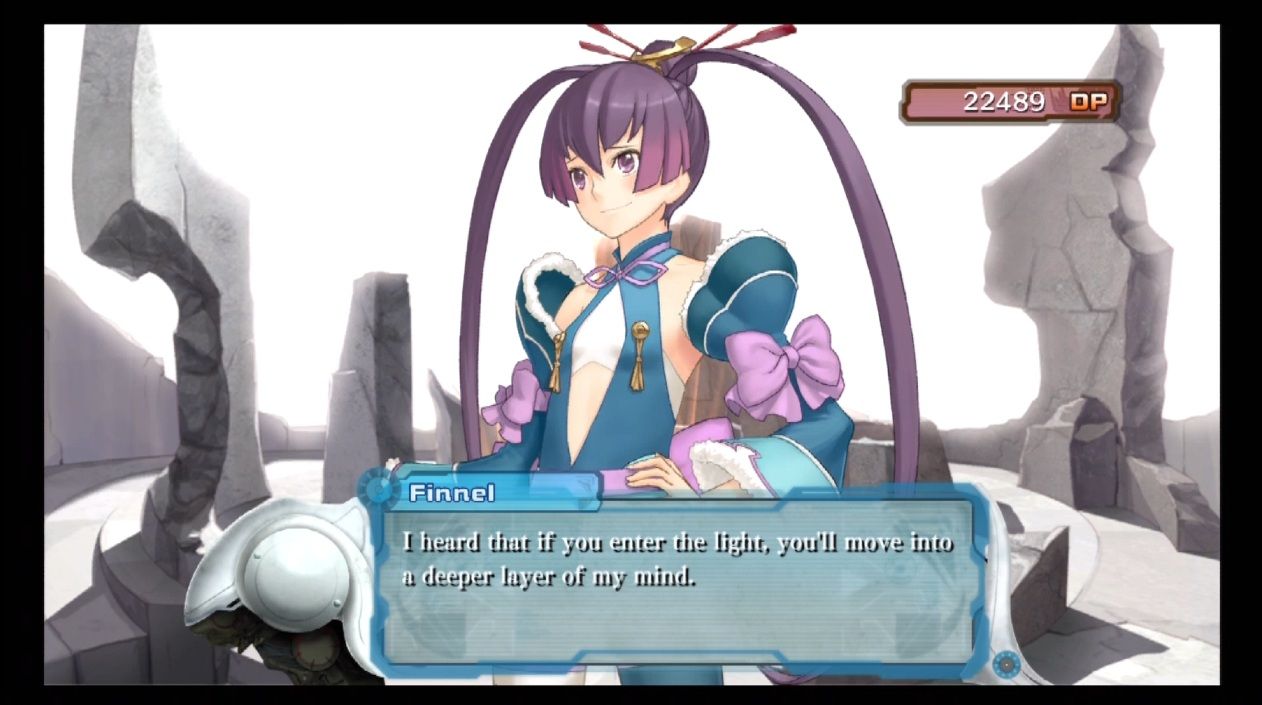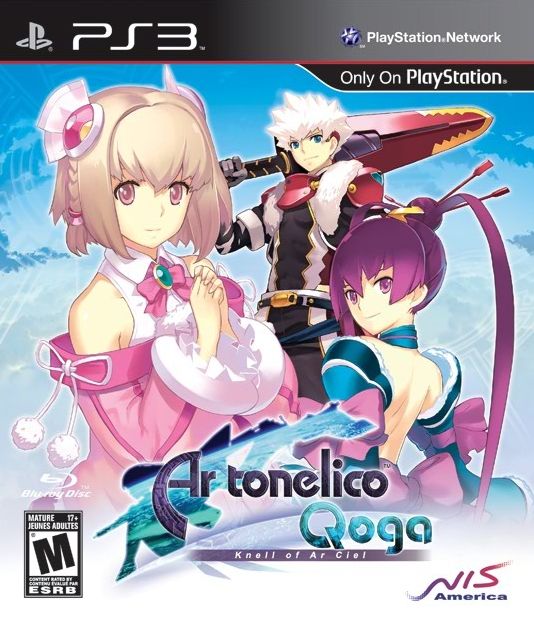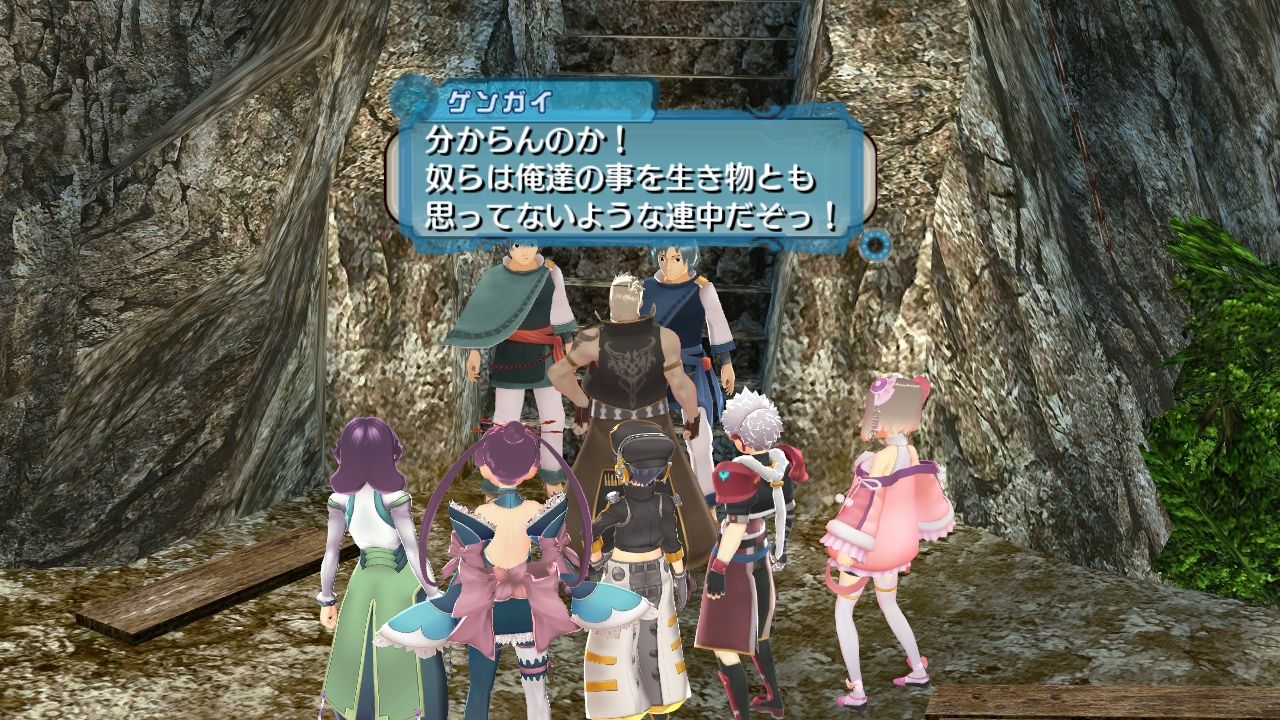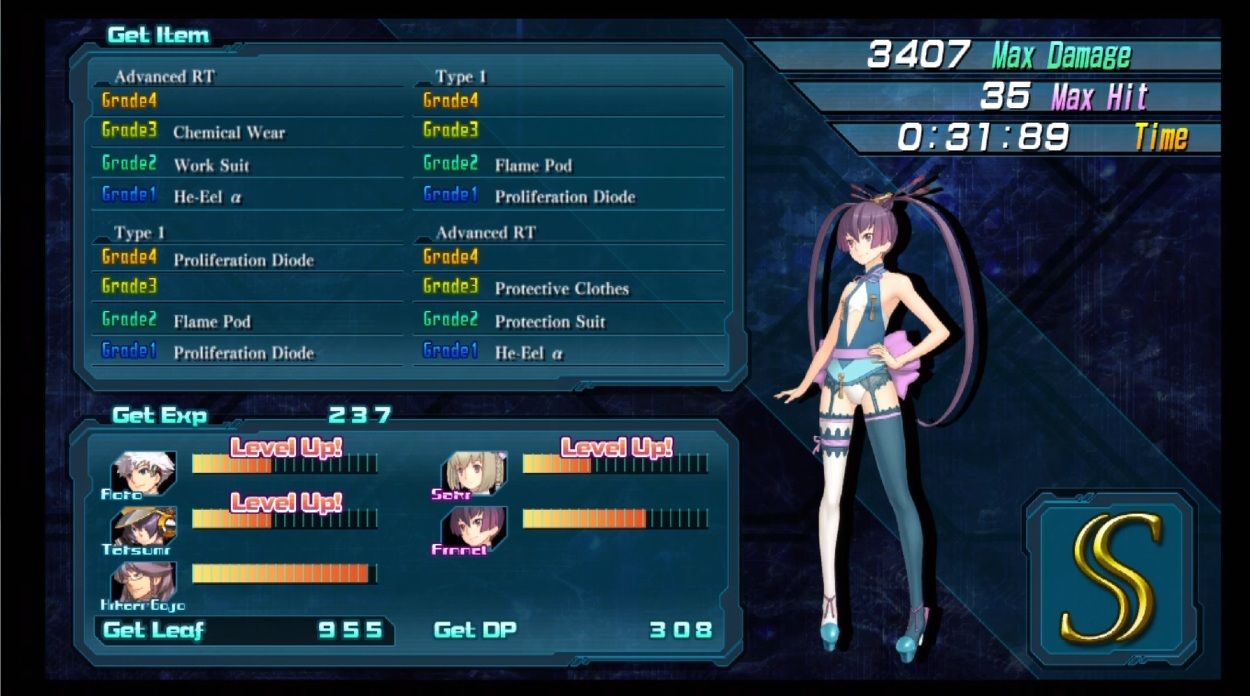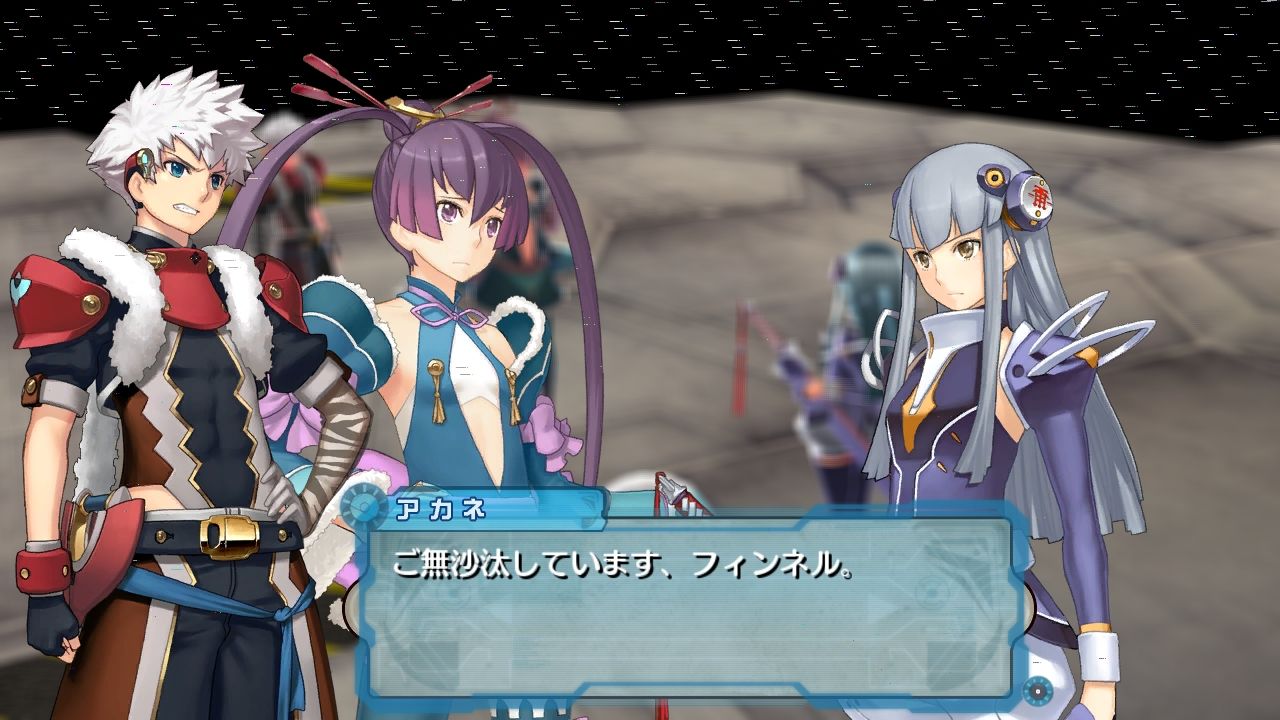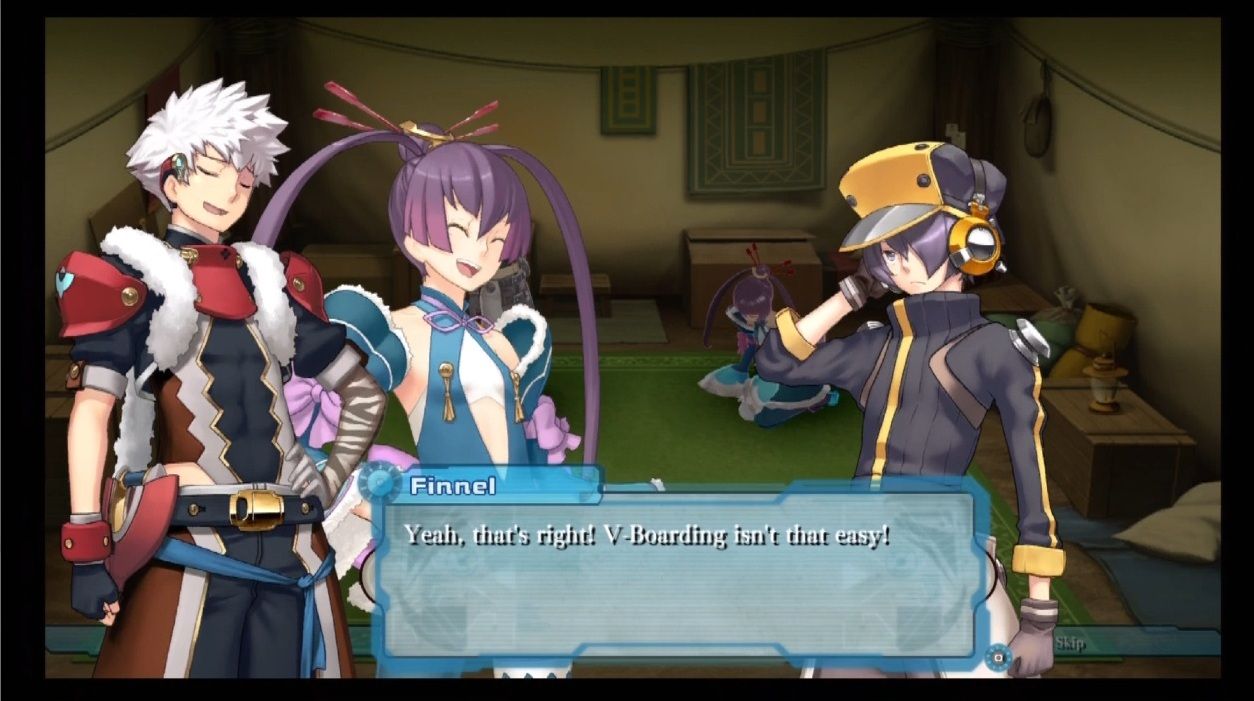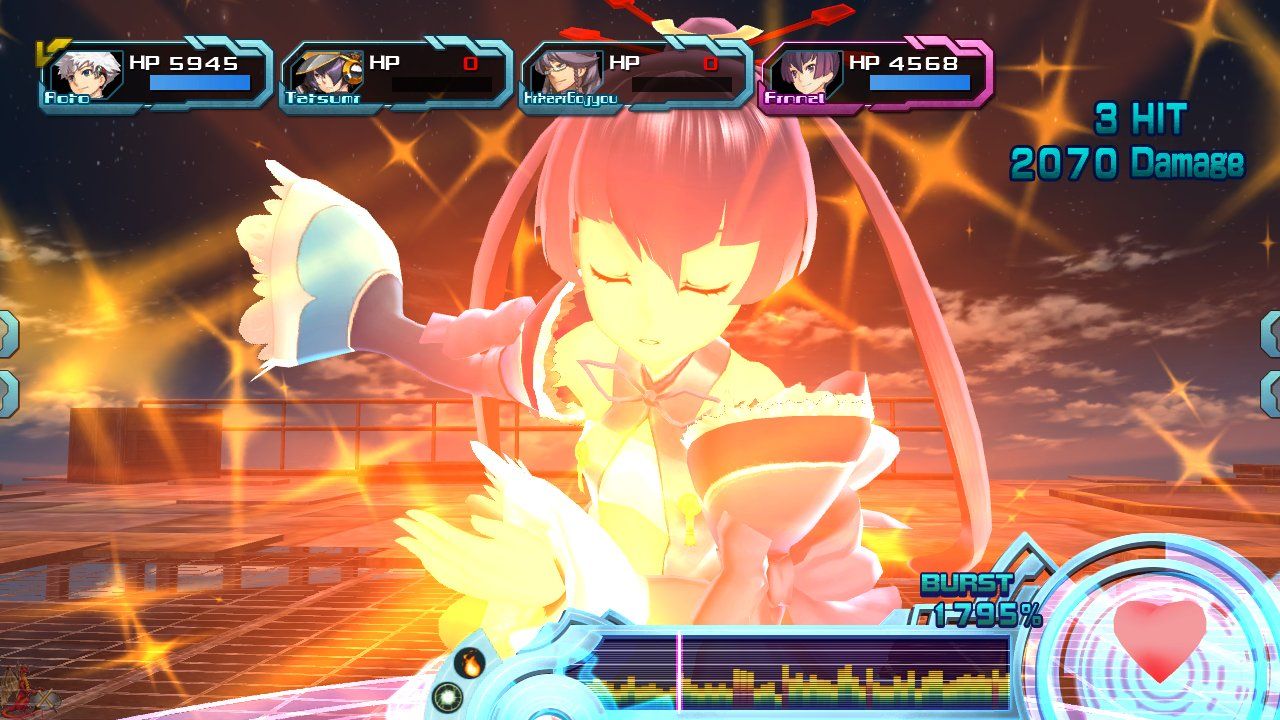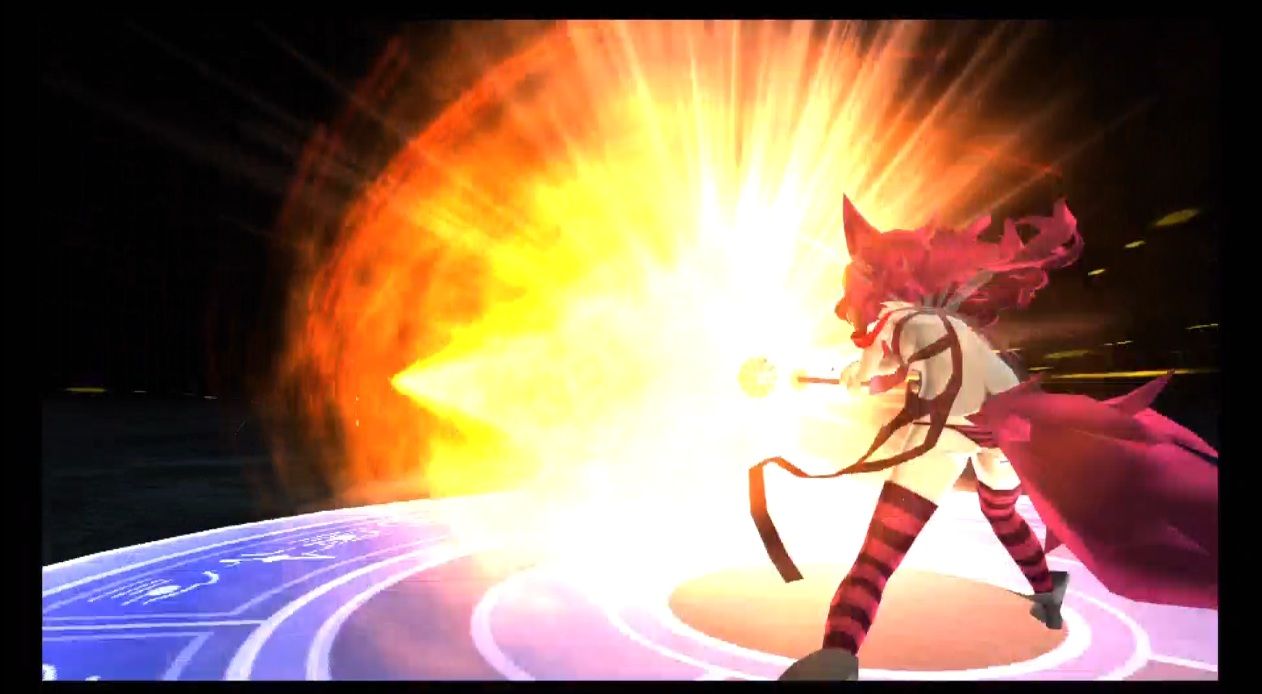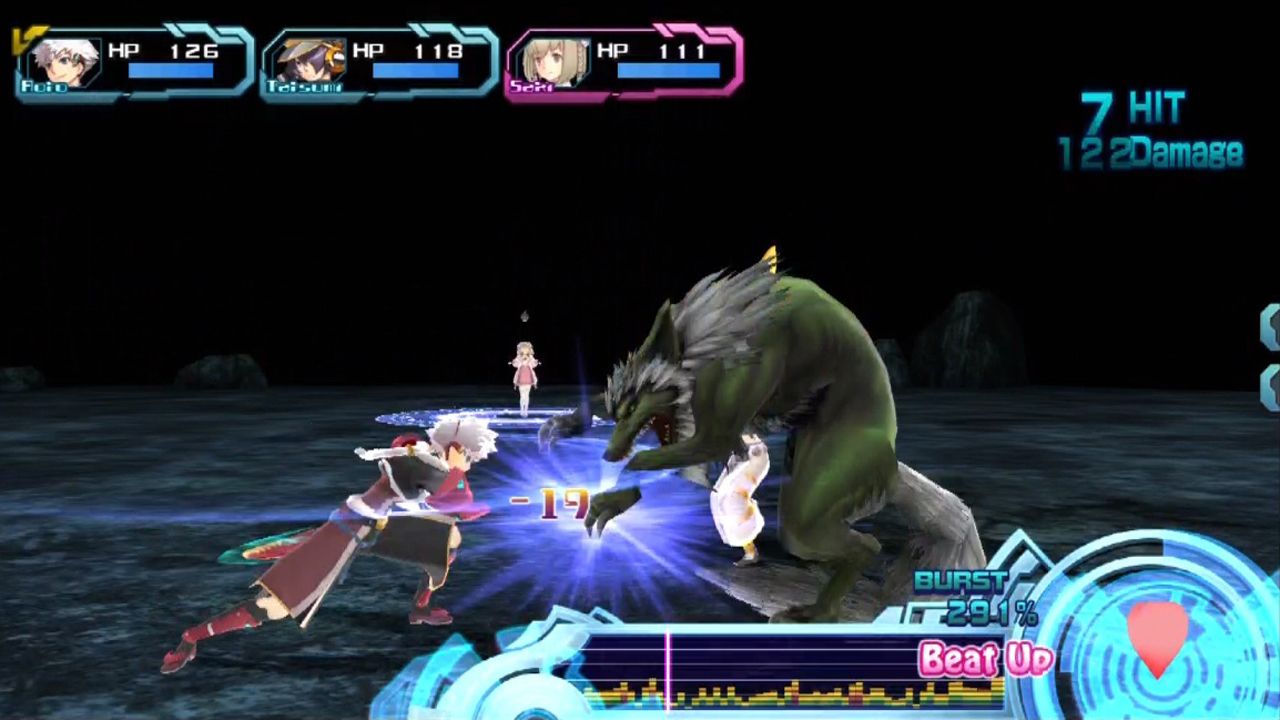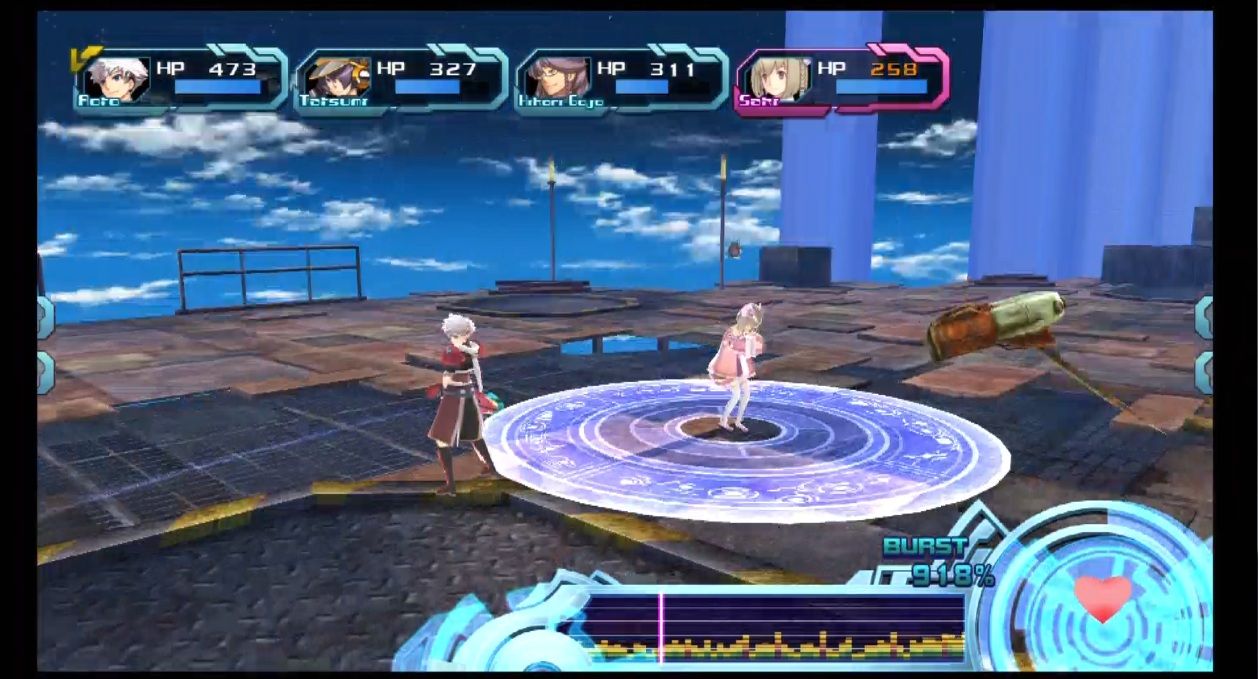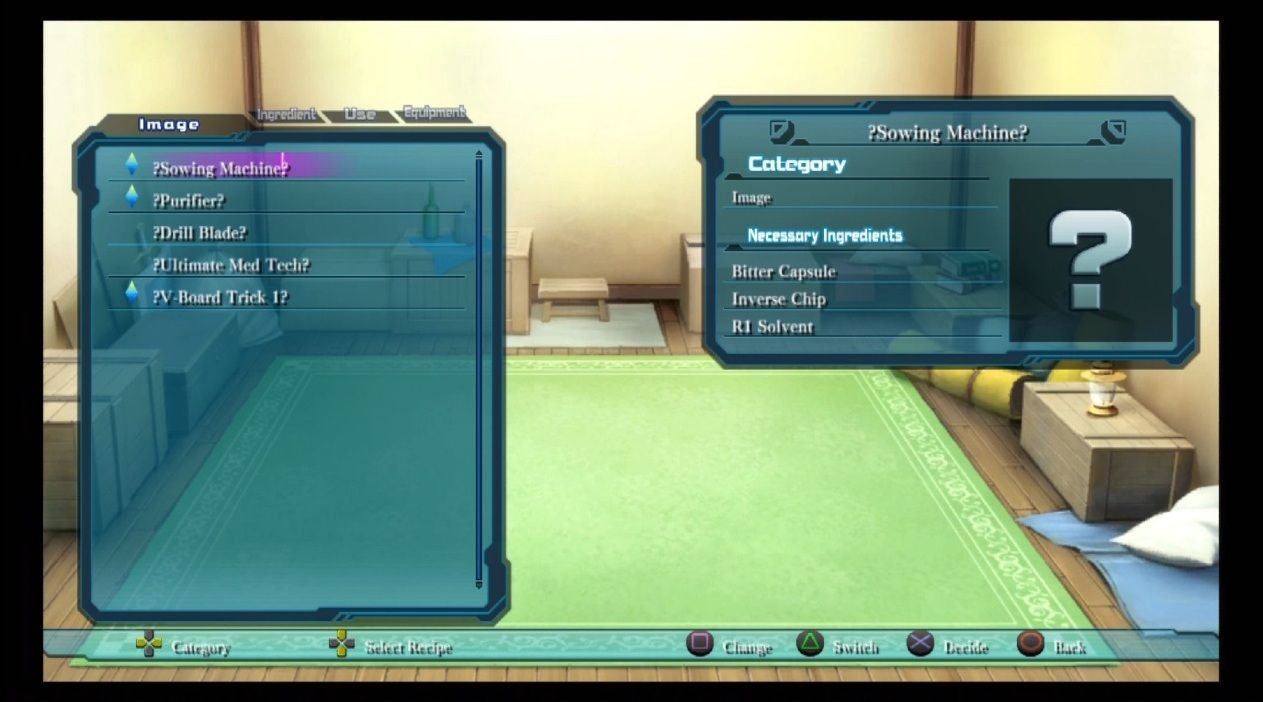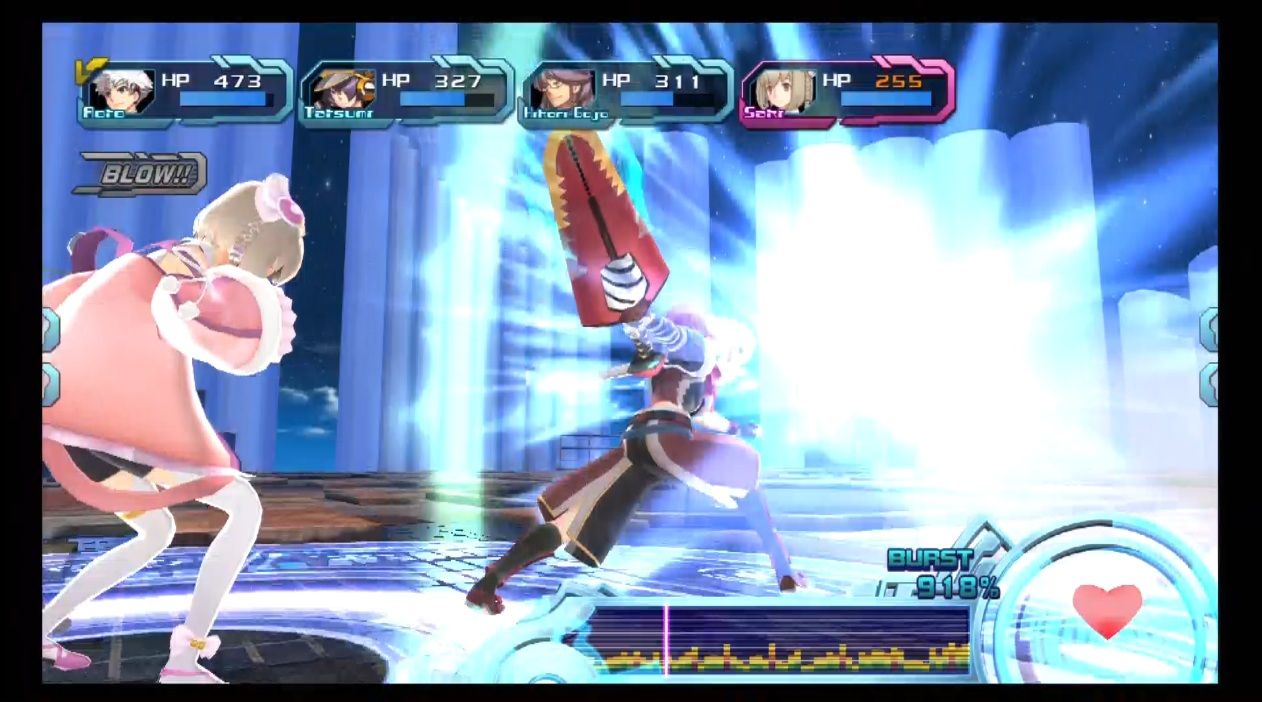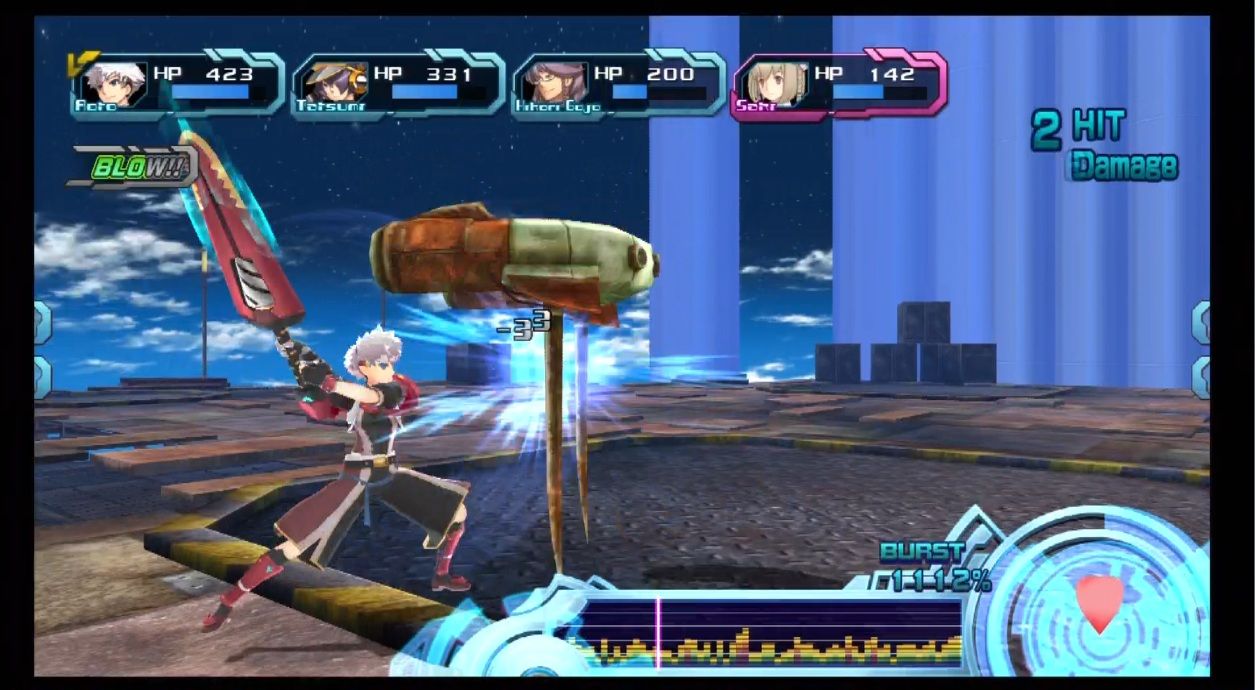The Ar Tonelico franchise has been around for some time, starting back on the PlayStation 2 with the original title and its sequel. I’ve played both games and quite enjoyed them for the overall experience, and I also enjoy the quality that Gust puts into its titles, for a smaller Japanese developer. That tradition is continued in what may be the “final” entry in the franchise, Ar Tonelico III, which was re-titled for Western release and named Ar Tonelico Qoga: Knell of Ar Ciel. Did this game live up to the standards set by its predecessors? Absolutely, and I’ll explain why as we work our way through this review.
Ar Tonelico Qoga follows the journey of Aoto, a small-town boy. Through a chance encounter, he meets Saki, a Reyvateil. Reyvateils are special girls that can use Song Magic for various purposes. Saki is being chased by the Clustanians, a group of humans that live in a huge tower and attempt to control everyone’s lives to suit their own purposes. Soon thereafter the small group meets Finnel, another Reyvateil with a mysterious past. Before long, Aoto, the poor sap, is involved in a war to save not only his way of life, but the lives of the two girls, as well.
One of the best things about this title is its ability to balance all aspects of the game very well, possibly better than most other JRPGs I’ve played in recent memory. You have several aspects of the game that combine together in a balanced manner to form the overall experience. This game, like its predecessors, is part relationship building, part main story narrative and part battle sequences. But, before we get into the details there, let’s talk about the visual and audio aspects.
Visually, it’s exactly what you would expect from Gust – a very anime-oriented art style in a fantastical world. The visuals are fairly high quality, this being the franchise’s first foray into non-sprite-based three-dimensional games. You’ll see a few similar environments here and there, but for the most part, the variety is good and the textures are decent quality. I’m personally a fan of the character art myself, as the artwork brings out the expressions and emotions the dialog is trying to get across during the story and relationship scenes. These scenes are presented in a visual novel style, but the game isn’t bogged down in them like the recent Hyperdimension Neptunia. If you’re looking for a more traditional JRPG, this is it.
In a game all about singing girls and Song Magic, the music doesn’t disappoint, either. There is quite a big variety of sounds and background music that suits the tone of the action on screen. Although, I do have to say the song that plays at the menu screen starts off rather grating and freaks me out if I accidently leave the volume high as I boot the game up. The battles change up occasionally, depending on the mood of your Reyvateil, and when that change occurs, so does the music. The audio here also translates into the battle system dynamically, which I’ll talk about a little later.
NIS America did an excellent job localizing the voices in Ar Tonelico Qoga, but it seems that things work a bit opposite than normal. What I mean is, usually the dialog is localized great, but the voice acting seems to suffer. This time around, the voice acting is pretty spectacular, but the dialog itself is a bit awkward at times, falling into the trap that many-a-JRPG does with repeating facts that are already well known and overuse of character names for no particular reason. Aside from the way the dialog is written, like I mentioned, the voice acting is top-notch. Especially pay attention to Finnel, which I think is probably one of the best voice acted JRPG characters I’ve heard in some time.
The relationship building aspect of this game has two separate, but intertwining parts. First off, there are dialog sequences between Aoto and either Saki or Finnel. These get queued up either automatically, or you can find them in various locations in the form of a little sparkly item to pick up that adds another topic to the list. Then, when you get to an inn or save point, you can perform the “Rest” function to refill the party’s health. At this time, an option will come up asking you which girl you want to talk to, then you can choose the topic you wish to discuss. The more you talk to a certain girl, the stronger your relationship with them becomes.
Let me just come right out and say it now, but there can be some highly suggestive dialog throughout the whole game, but especially in these little conversations between Aoto and either girl. I’m not just talking about your run-of-the-mill sexual innuendo, I’m talking some rather pervy and dirty stuff (if taken out of context). It’s kind of like the difference between a nip slip and full frontal, and is possibly part of the reason this title received a Mature rating from the ESRB. But, enough about that, you have been warned.
This leads to the second – and biggest - part of the relationship-building aspect – diving. Like in the previous Ar Tonelico titles, you can use Dive Shops to plunge into the girls’ subconscious minds, learning about their inner most feelings and thoughts, and helping them overcome personal phobias and their inner demons. This is accomplished mostly via a series of dialog events, each requiring the use of Dive Points, which are obtained after battle just like experience and currency. Each dialog scene progresses the side story that is playing out on that particular level of the girl’s Cosmosphere, or Soulspace (both terms seem to be used interchangeably within the game).
During various dialog sequences, you may be given a choice, and you have to answer based on what you know about the girl who’s mind you’re inside. If you answer correctly, you progress. If you answer incorrectly, you’re kicked out of her Cosmosphere. There’s no penalty to being kicked out aside from losing the Dive Points you may have spent to enter that last dialog sequence; you’ll have to spend them again to get another shot at choosing the right answer.
Eventually, when you clear a level in their Cosmosphere, you’ll trigger a Paradigm Shift, which means a layer of her soul has been peeled off an exposed to Aoto (this gets literal later on, hold your horses). Then, you exit the Cosmosphere and have to reenter to progress. To progress to the next layer, you have to “unlock” it by getting to know the girl better through the conversation topics I mentioned above. So, it’s one big circle of game mechanics.
All this “getting to know you better” fuss is used to make the Reyvateil stronger in battle. During your excursions into the girls’ Soulspace, you unlock new Song Magic, which can then be equipped on a girl in the real world at any inn or save point. These start out fairly weak, but get stronger the closer your relationship comes to the girl. This is where it gets interesting.
To perform more powerful actions, the story explanation is that the Reyvateil needs to expose more skin so she can soak up more of the earth’s energy. To equip more powerful Song Magic to the girl, you have to literally ask them to take their clothes off. Each girl has four layers of clothing, with the last layer gone, they’re the most powerful, but they are also barely clothed (which isn’t necessarily a bad thing, c’mon people).
Now, to equip stronger magic, you need to have a close enough relationship with the girl that she will willingly strip for you. (Seriously, that is the most uncomfortable line I’ve ever written in a review.) However, during battle you don’t have to be too far into a relationship with each girl before you can “purge” them fully. Each time you perform a “purge” in battle, they remove a layer of clothing and their healing, damage and buffing effects on the party get stronger.
While the battles themselves are pretty standard pseudo-action affairs (think Tales battle systems for a close approximation), the fun of it comes from improving your Reyvateil’s mood, attacking in beat with the music and unleashing powerful attacks with your Reyvateil. Here’s the way things go.
Along the bottom of the screen will be a beat meter that shows peaks and valleys in the music. On the right will be a heart icon, that will grow larger and larger the more you attack successfully when the music is at a peak. This improves the girl’s concentration and their confidence in battle, thus allowing your characters’ attacks themselves to become stronger, and the Reyvateil to reach “purge” status. A big “Purge Ready” display flies over the heart icon when this is ready. At this point, you have a choice to make. Each purge level has attached to it four different Song Magic abilities, attached to each of the four shoulder buttons of the controller. For example, you may have one that increases the Reyvateil’s damage, one that enhances her party healing, one that improves the party’s attack and one that improves their defense.
So, when a purge is ready, you hold down one of the buttons, shake your controller and the Reyvateil will remove a layer of clothing and get stronger, applying the effect from the Song Magic you chose to the battle. (A note here: At random you’ll also get an animation of the girl actually removing her clothes. Bonus points for that, Gust!) At any time you can make the Reyvateil perform a damage attack by pressing X, choosing the area you wish to fire and unleashing the destruction. However, the more you purge your Reyvateil – in other words, the more clothing they remove in battle – the stronger this attack is and the larger the area of effect.
Your other characters do have special abilities as well, which are learned through the synthesis system and can be applied to each of the four D-pad directional buttons. These are like a pin prick compared to the damage your Reyvateil can put out, though, and I found them mostly useful for their special ability, if one is attached. Some of them stun, knock back, poison, paralyze or otherwise hamper the enemy, and this is frankly more useful than the miniscule amount of damage they put out.
Being that your Reyvateil is the catalyst that binds the entire battle together, she needs to be protected, because she’s fairly weak in comparison to the other party members. There is a “personal space ring” (my term, not used in the game) that surrounds her. Friendly characters can enter the ring and get some quicker healing. But, when enemy characters enter the ring, the Reyvateil can’t perform Song Magic, can’t purge and takes a steady stream of damage on top of direct damage from enemy attacks, until the enemy is removed. Your character can enter the ring and hit the circle button to forcibly remove an enemy and knock them well away from your Reyvateil. There are some enemies that don’t bother charging the Reyvateil, but sometimes you really have to stay on your toes, because some will make a beeline straight for her.
There is one minor detail here that I really liked. All the characters you're able to control in battle seem to have their only little animation for kicking someone out of the Reyvateil's personal space ring. I especially like Cocona's, where she looks back to see if the Reyvateil is alright before continuing with the battle. Little details get bonus points, folks!
I really enjoyed this battle system because, like the rest of the game, it’s balanced, but relies heavily on your Reyvateil, her abilities and keeping her safe from harm. There’s a nice routine that you can get yourself in if you’re keen enough to listen to the music and attack based on the beat, and battles flow nicely and can be over quickly if you use your Reyvateil correctly. The only downside is that, if you misuse your Reyvateil or let her be attacked so much that you can’t build her up to purge status (or, heaven forbid, you let her die completely), battles will either be very long and painful or you will end up with a Game Over screen. The entire battle system relies on your Reyvateil above all else.
There is also a synthesis system built into the game, as if you didn’t have enough to do. It’s a breath of fresh air when the synthesis system seems to be the main way to obtain newer, more powerful weapons and armor. You tend to find basic item images, as well as materials, in chests during the field portions of the game. Then you can take these back and make something out of them, with each Reyvateil allowing you to make certain things. This is also the means by which you create special abilities that you can equip to your characters. One of the things I enjoyed about this portion is the quirky dialog. Each item you make has a unique bit of dialog between the characters working on the synthesis. Sometimes, even after the fact, synthesizing something opens up new dialog between Aoto and one of the Reyvateils, or between other party members farther down the line.
There are a few minor squabbles I have with the game as a whole, but none of them detract from the overall wonderful experience. First off, probably my biggest issue is the lack of any maps. This becomes especially noticeable and aggravating when you inevitably get stuck and can’t figure out where to go. You can check your current story objective at an inn or save point, but it is often very vague in actually directing you on where to go. The lack of a map on the field screens also pretty much ensures you’ll get that “wasn’t I just here a minute ago?” feeling more times than you would like.
Battles occur randomly, so running around a dungeon more than you should need to can be a slight annoyance. However, there is a finite amount of battles that are possible to be fought each time you enter an area, which is displayed on a meter at the bottom of the screen. Once the meter runs dry, you can roam around your current area at will without fighting any battles. Let me tell you right now, you will likely run that meter dry long before you figure out where to go on some larger, more intricate dungeons. Thankfully, many are also fairly linear and easy to navigate, but it’s the more involved ones that are the problem.
There is also occasionally some slow-down in battles with a larger amount of enemies on screen, but I can’t pinpoint any specific actions you take to cause it, it just happens occasionally, but it’s no big deal.
Ultimately, this game certainly does just about everything right – even being pervy. The questionable purge system works very nicely with the overall balance of the game and flow of character development and battle. I said at the beginning that all aspects of this game are perfectly balanced, and I meant it. Everything also works together to create just a generally great JRPG experience. I really have to say that, aside from Tales of Vesperia, this is probably the best JRPG I’ve played this console generation.
I applaud Gust for the quality game in general, and NIS America for the awesome localization. The few issues I had with the title don’t hamper the overall enjoyment at all. If you’re looking for an excellent example of Japanese RPG goodness, Ar Tonelico Qoga is your best bet right now. It may have gotten a lot of interesting press coverage because of the purge system, asking cute anime girls to strip and all that jazz, but that’s par for the course with this franchise and is to be expected. I’m sure the haters will hate, and JRPGs are getting a bad rap these days, but this is seriously a superb example of the genre. Every RPG fan should be playing this and adding it to their PS3 library.
- Game: Ar Tonelico Qoga: Knell of Ar Ciel
-
Platform Reviewed: PS3
- Developer: Gust, Inc.
- Publisher: NIS America
- Release Date: March 15, 2011
- MSRP: $59.99
- Review Copy Info: A copy of this title was provided to DualShockers, Inc. by the publisher for the purpose of this review.

